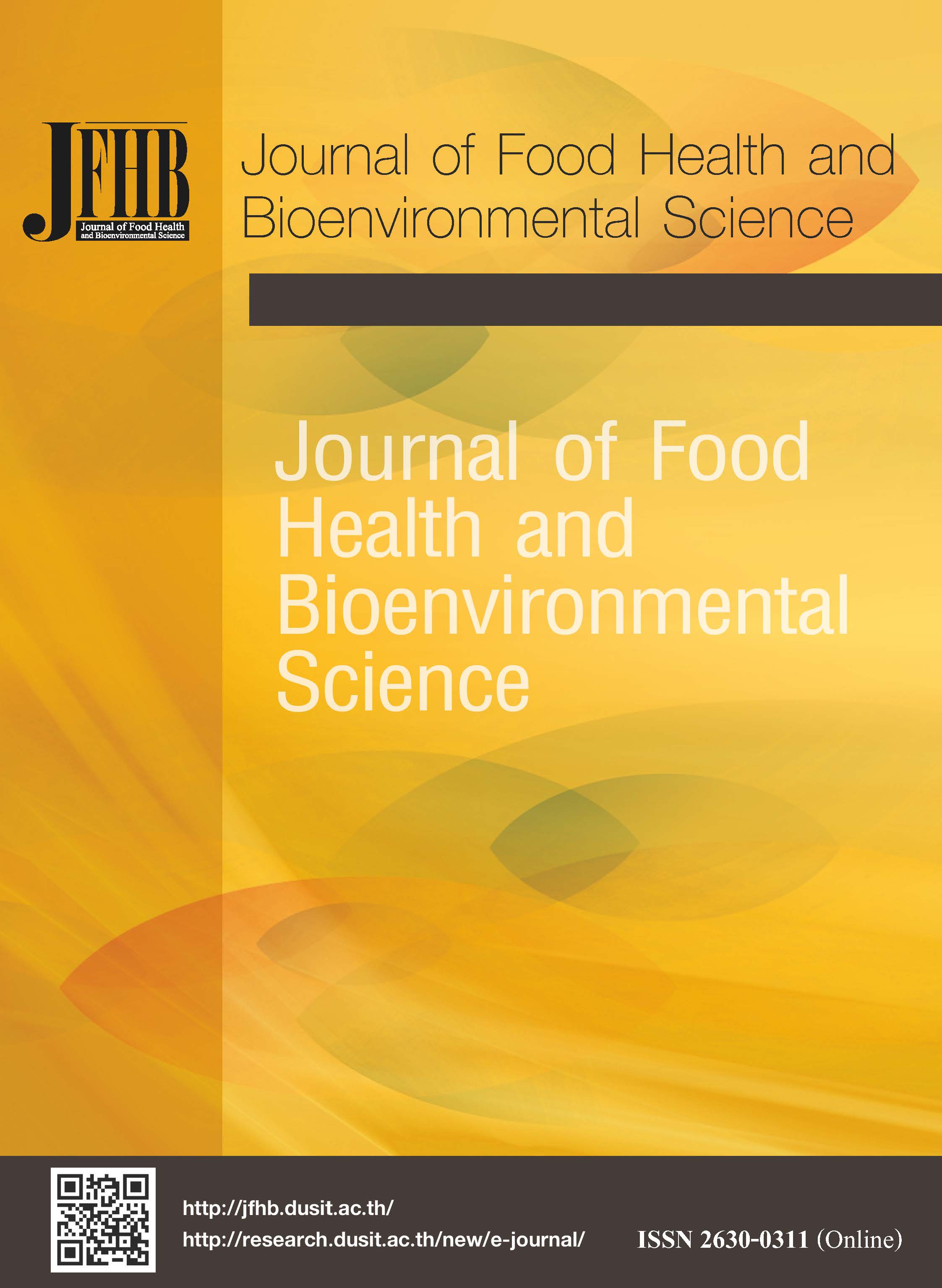Comparison of Pebbles Growing Media from Agricultural Waste Materials on Productivity Growth of Melon (cv. Orange Man and cv. Galia 248) Cultivated in Greenhouse Conditions
Keywords:
Pebbles growing media, Orange Man melon, Galia 248 melonAbstract
The objective of this research project was to compare the results from the use of pebbles growing media made from agricultural waste suitable for the growth and productivity of two cultivars, Orange Man melon and Galia 248 melon in a greenhouse. Pebbles growing media could reduce cost from the traditional material used for growing melon and have higher productivity for farmers. The experiment was divided into 5 experimental sets, namely, set that uses 100% of pebbles from agricultural waste (T1), set that uses normal planting material(coconut husk and chopped coconut coir in the ratio of 2 to 1), 25% mixed with pebbles from agricultural waste at 75% (T2), 50% mixed with pebbles from agricultural waste at 50% (T3), 75% mixed with pebbles from agricultural waste at 25% (T4), and normal planting material 100% (T5).The research methodology is CRD, with one-way and two-way analysis of variance (ANOVA). In addition, the pair test with Scheffe’s method to compare the difference that affects fruit weight of the melon at 42 days after pollination was used. The comparison of the means and standard deviation were performed by Scheffe’s method at P ≤ 0.05 significance level. From the growth and productivity records of two cultivars melon, it was found that the experimental set that is most suitable is T2 which gave high yield of fruit width, fruit length, fruit weight and Brix value. Orange Man cultivars grown with T2 exhibited the average fruit width, fruit length, fruit weight and Brix value at 23.6±1.8 cm, 23.7±1.9 cm, 1.9±0.1 kg and 16±0.0° Brix, respectively. Galia 248 cultivars grown with T2 exhibited the average fruit width, fruit length, fruit weight and Brix value at 23.2±0.8 cm, 24.4±1.2 cm, 1.9±0.1 kg and 15±0.6° Brix, respectively. These results indicated that the factors of cultivar and treatment at the time of pollination are not different from each other with the statistical significance and confidence level of 95% compared with melons grown with T5 (normal planting material). These findings can lead to benefit farmers by reducing the cost of growing material for as much as 75% per time. The new material are easily manageable as well as having a long service life.
References
Assadayudh, A., Pichakum, N., & Boonkorkaew, P. (2020). Study of diatomite pellet medium to substitute mixed soil for indoor pot plant. In Proceedings of 58th Kasetsart University Annual Conference: Plants, Animals, Veterinary Medicine, Fisheries, Agricultural Extension and Home Economics (pp. 252-259). Bangkok: Kasetsart University.
Chaitayakul, M. (2008). Development expanded clay for substrate culture in vegetable hydroponics. Agricultural Science Journal, 39(3), 400-403.
Janbuala, S., & Wasanapiarnpong, T. (2015). Effect of rice husk and rice husk ash on properties of lightweight clay bricks. Key Engineering Materials, 659, 74-79.
Jaruwattanaphan, T., Longchuphon, S., & Chulaka, P. (2015). Effect of growing media on growth of Selaginella pulvinata (Hook. et Grev.) Maxim. leafy shoot cutting. Agricultural Science Journal 46(3), 209-212.
Lester, G. (1997). Melon (Cucumis melo L.) fruit nutritional quality and health functionality. Hortechnology, 7(3). 222-227.
Supakamnerd, N., & Ketsamut, L. (2015). Research and development on lady’s slipper orchid for commercial (Research report). Bangkok: Department of Agriculture.
Downloads
Published
How to Cite
Issue
Section
License
Copyright (c) 2024 Journal of Food Health and Bioenvironmental Science

This work is licensed under a Creative Commons Attribution-NonCommercial-NoDerivatives 4.0 International License.








